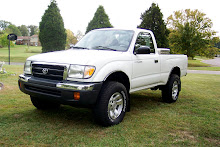A regular part of maintenance is to check all your fluid levels. To check your oil level park you vehicle on a level surface. An un-level surface will give you a false reading. Let the vehicle set for at least 30 minutes before checking the oil level. Remove the oil dipstick and wipe it clean. Fully insert it back into the engine and then remove it an look closely at the level of the oil. You will see Full & Add. If you are close to full do not add any oil. The amount between full & add is normally around 1 quart but may be 1/2 quart depending on your vehicle. When adding oil do not overfill. Add a slight amount wait a few minutes and check again.
To check your brake fluid normally you can just look at the master cylinder located on the firewall driver's side. Normally they are clear and you can see the fluid. It is normal for the fluid level to go down as your brake pads wear. So if you see that the level has dropped significantly and you have over 35,000 miles since last replacing the brake pads, you need to take a look and see if they need replacing. Of course if you hear a squeal or grinding noise during braking, you pads are worn out. Only add fluid if the level is at the add mark. And then add DOT3 brake fluid or whatever is listed on the master cylinder cap. Only add fluid from an unopened container. Brake fluid absorbs moisture so discard that unused fluid. I know this sounds wasteful, but old fluid stored in a can that has been opened, is not what you want to add to your master cylinder.

To check the Power Steering fluid you have 2 choices. You can check it cold or hot. Pull the P/S dipstick out and look for the
marks. One should say cold and one hot. Add only the correct P/S

fluid as listed in your owner's manual. It takes very little to bring it to full. Do not overfill.
To check the Automatic Transmission fluid look in your owner's manual or on the dipstick itself for the correct procedure. They are normally located at the rear of the engine near the transmission. Do not mix the A/T dipstick up with the Oil dipstick. Some A/T you check hot, engine running, in park or neutral, others cold, engine off, some you can check both cold or hot, others you simply cannot check at all, as they are sealed units. Whatever way you check it, make sure you follow your owner's manual directions to the letter. Normally to go from low to full only requires you add 1 pint of fluid or less. Use the exact transmission fluid listed in your owner's manual. DO NOT SUBSTITUTE or OVERFILL! It is critical you use the correct fluid or you may damage the transmission. For instance if you own a Honda, you must use Honda ATF and no other. Most GM vehicles require Dexron 1, 2, or 3. On some vehicles you have no way of checking the fluid level as the A/T is sealed. When you check the fluid level look closely at the fluid an smell it. If it looks and smells burnt with a very foul odor, you need to have the fluid changed by a professional. You will need a long neck filter in order to add

fluid. If the fluid level is low, this indicates a leak as A/T fluid is not used up. You may want to consult a professional about the leak. I also recommend you have the A/T fluid changed every 50,000 miles or the interval listed in your owner's manual.
To check the coolant level, look at the coolant recovery tank, engine off and cold. Add a 50/50 mix of Antifreeze & Distilled Water, if it is below the full mark cold. You can purchase this pre-mixed or mix it yourself. Add only the coolant listed in your owner's manual. If you notice you are regularly loosing coolant, look for a leak. If you see no apparent leak, be aware you may have an internal engine problem. If you see white smoke which smells sweet, or your oil level is over full, suspect you have a blown head gasket which is very serious and must be repaired ASAP. Stop driving the vehicle until this is repaired.
To check the windshield washer fluid, locate the WW reservoir. Do not mix this up with the coolant recovery tank. Normally the WWR will have a blue cap. Add only commercially available WW fluid and do not add plain water.
I suggest you have your manual transmission and differential checked by a professional. It requires special lubricants and tools to service these which you normally do not have on hand.






